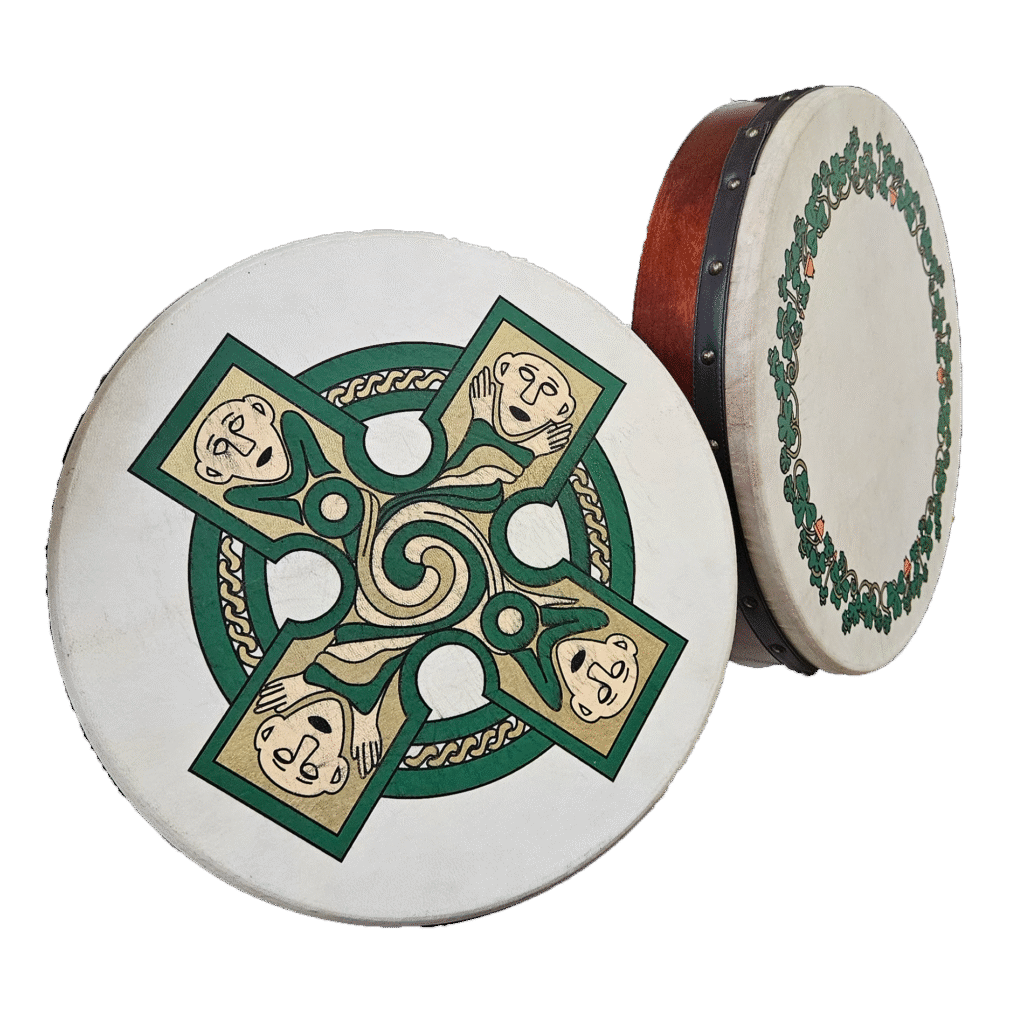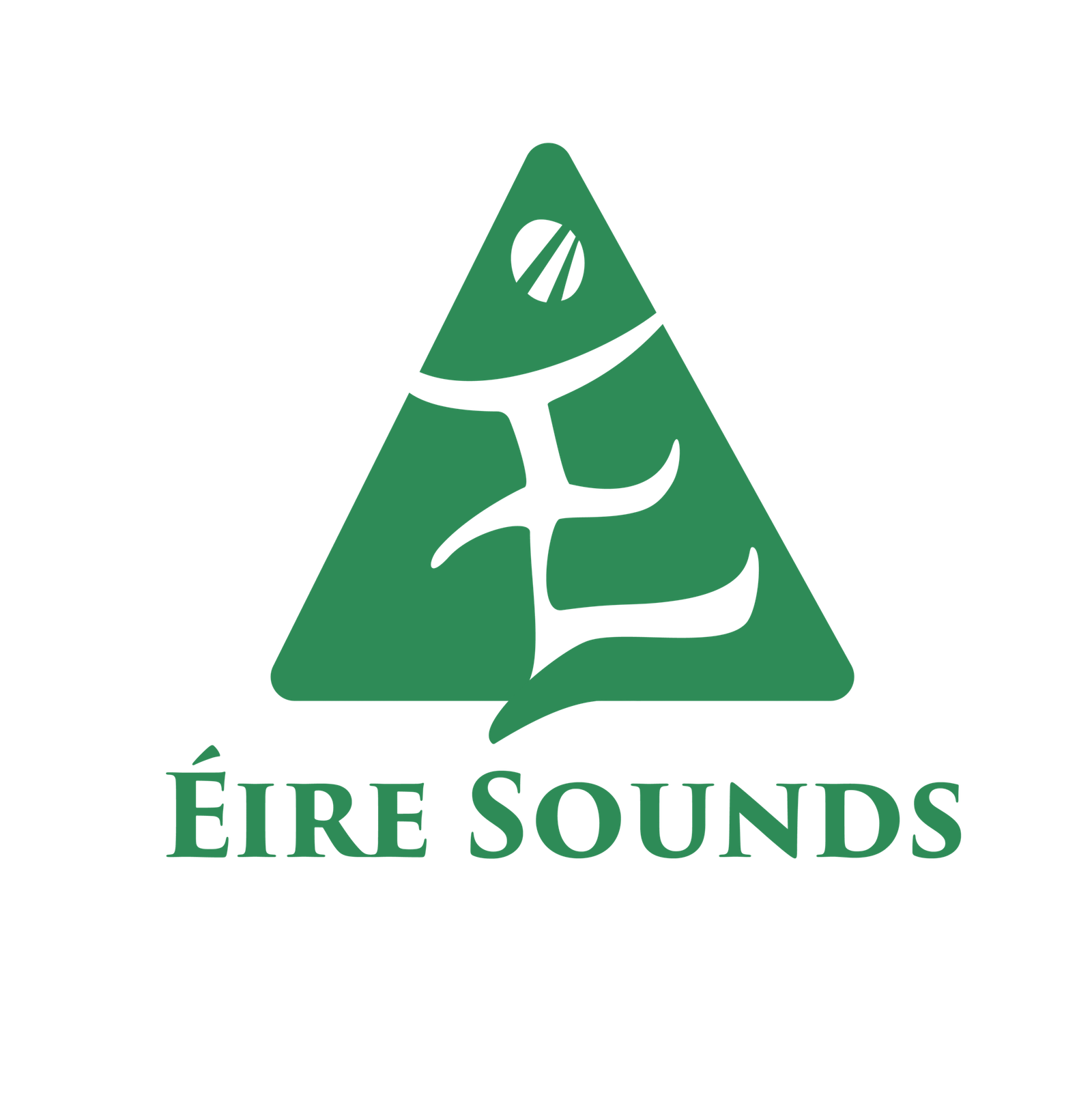Description & Construction
The bodhrán is Ireland’s iconic frame drum, typically 35–45 cm (14–18 in) in diameter, made with goatskin stretched over a wooden hoop (ITMA, Wikipedia).
Playing Technique
Played using a wooden stick called a tipper (or beater), or with the hand. Tippers range from 6″ to 12″, allowing varied articulation and tone control (Online Academy of Irish Music). It’s held at an angle, the left hand supports and changes pitch via pressure inside the drum head.
Usage in Music
Adds rhythmic drive to jigs, reels, and slow airs. Became central to Irish music during the folk revival in the 1960s, especially through Seán Ó Riada’s ensembles (bodhran-info, McNeela Music).
Pioneers & Players
- Tommy Hayes: legendary percussionist, original Riverdance bodhrán player, and innovator behind bodhrán‑spoons‑bones techniques (McNeela Music).
- John Joe Kelly: revolutionised playing style with fast, melodic rhythms, inspiring a generation (McNeela Music).
- Kevin Conneff: singer‑bodhrán player with The Chieftains, fulfilled the vision of integrating bodhrán into ensemble playing (Wikipedia).
- Mel Mercier: son of bodhrán pioneer Peadar Mercier, blends global percussion styles into Irish rhythm (McNeela Music).
Historical Context
- Origins: The bodhrán is often considered a relatively modern addition to Irish traditional music, though frame drums themselves are ancient and widespread. Some scholars suggest the bodhrán evolved from agricultural or utilitarian uses, such as grain sieves or shallow trays.
- First Mentions: Written references date back to the 18th century, but they were not widely used in music until the mid-20th century.
- Cultural Use: Traditionally played during Wren Boys’ processions on St. Stephen’s Day (December 26), especially in the southwest of Ireland (Kerry and Clare). It was more of a ritual and seasonal instrument than a musical one.
- Modern Revival: In the 1960s, Seán Ó Riada revolutionised Irish traditional music by arranging it for ensemble performance and including the bodhrán as a serious rhythmic instrument. It was popularised through groups like Ceoltóirí Chualann and later The Chieftains.
Today: Now a staple in sessions, concerts, and even fusion genres. Its technique has developed significantly with pitch control, dampening, and complex rhythmic phrasing.

